Design of a V-Twin with Crank-Slider Mechanism Wind Energy Harvester Using Faraday’s Law of Electromagnetic Induction for Powering Small Scale Electronic Devices
Abstract
:1. Introduction
- Wind/hydro/fluid flow: Requires adequate wind speed, orientation, and a very high contact area.
- Solar: Requires ideal conditions with no cloud cover and a proper angle. Additionally, its components have a high decay rate.
- Electromagnetic: Has size requirements and its moving components can experience failure;
- Piezoelectric: Outputs a high voltage with a low current and its moving components can experience failure.
- Vibration/linear: Must be in line with the device, operate at natural resonance for the maximum output, and its moving components can experience failure.
- Rotational: Produces significant forces when the masses rotate at a large radius, has moving components that can experience failure, and is generally associated with fluid flow, which has several additional restrictions (see above).
- A wind harvester that has the capacity to function at low speeds (3.4 m/s);
- A novel way of converting rotational motion to linear motion via a crank-slider mechanism in a harvester;
- A harvester that is easily transported and small-scale;
- A harvester design that can be easily adapted for higher output by adding more crank-slider mechanisms to the system;
- A rotational design that experiences lower detrimental forces on its components compared to similar designs; and
- A configuration that has a comparable power output to other similar devices, without experiencing potentially damaging high peak voltages.
2. Materials and Methods
3. Results and Discussion
3.1. Single Crank-Slider Harvester
3.2. V-Twin Harvester Utilizing Two Crank-Slider Mechanisms
4. Conclusions
Author Contributions
Funding
Conflicts of Interest
References
- U.S. EIA (U.S. Energy Information Administration). Independent Statistics and Analysis; U.S. EIA: Washington, DC, USA, 2022.
- BP Plc. bp Statistical Review of World Energy 2020; Addison-Wesley: London, UK, 2020. [Google Scholar]
- Kiziroglou, M.; Yeatman, E. 17—Materials and techniques for energy harvesting. In Functional Materials for Sustainable Energy Applications; Kilner, J.A., Skinner, S.J., Irvine, S.J., Edwards, P.P., Eds.; Woodhead Publishing Series in Energy; Woodhead Publishing: Cambridge, UK, 2012; pp. 541–572. [Google Scholar] [CrossRef]
- Khan, F.U.; Ahmad, I. Review of Energy Harvesters Utilizing Bridge Vibrations. Shock Vib. 2016, 2016, 1340402. [Google Scholar] [CrossRef]
- Roundy, S. On the Effectiveness of Vibration-based Energy Harvesting. J. Intell. Mater. Syst. Struct. 2005, 16, 809–823. [Google Scholar] [CrossRef]
- Myers, R.; Vickers, M.; Kim, H.; Priya, S. Small scale windmill. Appl. Phys. Lett. 2007, 90, 054106. [Google Scholar] [CrossRef]
- Dutta, M.; Shrimoyee, P. Footstep voltage generator using piezo-electric transducers. Int. J. Sci. Eng. Res. 2017, 8, 117–120. [Google Scholar]
- Crovetto, A.; Wang, F.; Hansen, O. Modeling and Optimization of an Electrostatic Energy Harvesting Device. J. Microelectromech. Syst. 2014, 23, 1141–1155. [Google Scholar] [CrossRef]
- Annapureddy, V.; Palneedi, H.; Hwang, G.T.; Peddigari, M.; Jeong, D.Y.; Yoon, W.H.; Kim, K.H.; Ryu, J. Magnetic energy harvesting with magnetoelectrics: An emerging technology for self-powered autonomous systems. Sustain. Energy Fuels 2017, 1, 2039–2052. [Google Scholar] [CrossRef]
- Chen, W.T.; Gurdal, A.E.; Tuncdemir, S.; Gambal, J.; Chen, X.M.; Randall, C.A. Introducing an extremely high output power and high temperature piezoelectric bimorph energy harvester technology based on the ferroelectric system Bi(Me)O3-PbTiO3. J. Appl. Phys. 2020, 128, 144102. [Google Scholar] [CrossRef]
- Dinulovic, D.; Brooks, M.; Haug, M.; Petrovic, T. Rotational Electromagnetic Energy Harvesting System. Phys. Procedia 2015, 75, 1244–1251. [Google Scholar] [CrossRef]
- Luong, H.T.; Goo, N.S. Use of a magnetic force exciter to vibrate a piezocomposite generating element in a small-scale windmill. Smart Mater. Struct. 2012, 21, 025017. [Google Scholar] [CrossRef]
- Wang, X.; Pan, C.L.; Liu, Y.B.; Feng, Z.H. Electromagnetic resonant cavity wind energy harvester with optimized reed design and effective magnetic loop. Sens. Actuators A Phys. 2014, 205, 63–71. [Google Scholar] [CrossRef]
- Chen, J. Barrel of Oil Equivalent (BOE). 2020. Available online: https://www.investopedia.com/terms/b/barrelofoilequivalent.asp#:\protect\T1\textdollar\sim\protect\T1\textdollar:text=%20There%20are%2042%20gallons%20(approximately,have%20slightly%20different%20energy%20%20equivalents (accessed on 27 July 2022).
- Cepnik, C.; Lausecker, R.; Wallrabe, U. Review on electrodynamic energy harvesters—A classification approach. Micromachines 2013, 4, 168–196. [Google Scholar] [CrossRef]
- Shi, B.; Li, Z.; Fan, Y. Implantable energy-harvesting devices. Adv. Mater. 2018, 30, 1801511. [Google Scholar] [CrossRef] [PubMed]
- Michaud, S.; Schneider, A.; Bertrand, R.; Lamon, P.; Siegwart, R.; Winnendael, M.v.; Schiele, A. SOLERO: Solar powered exploration rover. In Proceedings of the 7th ESA Workshop on Advanced Space Technologies for Robotics and Automation (ASTRA), Noordwijk, The Netherlands, 19–21 November 2002; ETH-Zürich: Zurich, Switzerland, 2002. [Google Scholar]
- Lamarre, O.; Kelly, J. Overcoming the challenges of solar rover autonomy: Enabling long-duration planetary navigation. arXiv 2018, arXiv:1805.05451. [Google Scholar]
- Landis, G.A. Exploring mars with solar-powered rovers. In Proceedings of the Conference Record of the Thirty-First IEEE Photovoltaic Specialists Conference, Lake Buena Vista, FL, USA, 3–7 January 2005; IEEE: New York, NY, USA, 2005; pp. 858–861. [Google Scholar]
- Zhao, L.C.; Zou, H.X.; Yan, G.; Liu, F.R.; Tan, T.; Wei, K.X.; Zhang, W.M. Magnetic coupling and flextensional amplification mechanisms for high-robustness ambient wind energy harvesting. Energy Convers. Manag. 2019, 201, 112166. [Google Scholar] [CrossRef]
- Izadgoshasb, I.; Lim, Y.Y.; Vasquez Padilla, R.; Sedighi, M.; Novak, J.P. Performance enhancement of a multiresonant piezoelectric energy harvester for low frequency vibrations. Energies 2019, 12, 2770. [Google Scholar] [CrossRef]
- Fan, K.; Qu, H.; Wu, Y.; Wen, T.; Wang, F. Design and development of a rotational energy harvester for ultralow frequency vibrations and irregular human motions. Renew. Energy 2020, 156, 1028–1039. [Google Scholar] [CrossRef]
- Li, X.; Meng, J.; Yang, C.; Zhang, H.; Zhang, L.; Song, R. A magnetically coupled electromagnetic energy harvester with low operating frequency for human body kinetic energy. Micromachines 2021, 12, 1300. [Google Scholar] [CrossRef] [PubMed]
- Tang, X.; Zuo, L. Simulation and experiment validation of simultaneous vibration control and energy harvesting from buildings using tuned mass dampers. In Proceedings of the 2011 American Control Conference, San Francisco, CA, USA, 29 June–1 July 2011; IEEE: New York, NY, USA, 2011; pp. 3134–3139. [Google Scholar]
- Sato, M.; Takemura, T.; Mizuno, T. Voltage Improvement of a Swing-Magnet-Type Generator for Harvesting Bicycle Vibrations. Energies 2022, 15, 4630. [Google Scholar] [CrossRef]
- National Geographic Society (NGS). Wind Energy; NGS: Washington, DC, USA, 2022. [Google Scholar]
- Contreras Montoya, L.T.; Hayyani, M.Y.; Issa, M.; Ilinca, A.; Ibrahim, H.; Rezkallah, M. 8—Wind power plant planning and modeling. In Hybrid Renewable Energy Systems and Microgrids; Kabalci, E., Ed.; Academic Press: Cambridge, MA, USA, 2021; pp. 259–312. [Google Scholar] [CrossRef]
- Hyams, M. Wind energy in the built environment. In Metropolitan Sustainability; Elsevier: Amsterdam, The Netherlands, 2012; pp. 457–499. [Google Scholar]
- Appadurai, M.; Raj, E.F.I. Finite Element Analysis of Composite Wind Turbine Blades. In Proceedings of the 2021 7th International Conference on Electrical Energy Systems (ICEES), Virtual, 11–13 February 2021; pp. 585–589. [Google Scholar] [CrossRef]
- Fang, Y.; Tang, T.; Li, Y.; Hou, C.; Wen, F.; Yang, Z.; Chen, T.; Sun, L.; Liu, H.; Lee, C. A high-performance triboelectric-electromagnetic hybrid wind energy harvester based on rotational tapered rollers aiming at outdoor IoT applications. iScience 2021, 24, 102300. [Google Scholar] [CrossRef]
- Pozo, B.; Gárate, J.; Araujo, J.; Ferreiro, S. Energy Harvesting Technologies and Equivalent Electronic Structural Models—Review. Electronics 2019, 8, 486. [Google Scholar] [CrossRef]
- Pozo, B.; Araujo, J.; Zessin, H.; Mateu, L.; Gárate, J.; Spies, P. Mini Wind Harvester and a Low Power Three-Phase AC/DC Converter to Power IoT Devices: Analysis, Simulation, Test and Design. Appl. Sci. 2020, 10, 6347. [Google Scholar] [CrossRef]
- Narolia, T.; Gupta, V.; Parinov, I. Design and analysis of a shear mode piezoelectric energy harvester for rotational motion system. J. Adv. Dielectr. 2020, 10, 2050008. [Google Scholar] [CrossRef]
- Shigley, J.E. Series in Mechanical Engineering; McGraw Hill Book Company Inc.: New York, NY, USA, 1961. [Google Scholar]
- McCaslin, S.; Brown, F. Slider and Crank Mechanism. 2010. Available online: https://demonstrations.wolfram.com/SliderAndCrankMechanism/ (accessed on 27 July 2022).
- Bedekar, V.; Oliver, J.; Priya, S. Pen harvester for powering a pulse rate sensor. J. Phys. D Appl. Phys. 2009, 42, 105105. [Google Scholar] [CrossRef]
- Saha, C.R.; O’Donnell, T.; Loder, H.; Beeby, S.; Tudor, J. Optimization of an electromagnetic energy harvesting device. IEEE Trans. Magn. 2006, 42, 3509–3511. [Google Scholar] [CrossRef]
- Xu, Z.; Shan, X.; Chen, D.; Xie, T. A novel tunable multi-frequency hybrid vibration energy harvester using piezoelectric and electromagnetic conversion mechanisms. Appl. Sci. 2016, 6, 10. [Google Scholar] [CrossRef]
- Teja, R. Wire Gauge Chart | American Wire Gauge (AWG) Wire Size Chart. 2021. Available online: https://www.electronicshub.org/wire-gauge-chart/ (accessed on 27 July 2022).
- Chen, J.; Hu, W.; Cao, D.; Zhang, B.; Huang, Q.; Chen, Z.; Blaabjerg, F. An imbalance fault detection algorithm for variable-speed wind turbines: A deep learning approach. Energies 2019, 12, 2764. [Google Scholar] [CrossRef]
- Peigney, M.; Siegert, D. Low-frequency electromagnetic energy harvesting from highway bridge vibrations. J. Bridge Eng. 2020, 25, 04020056. [Google Scholar] [CrossRef]
- Li, X.; Li, Z.; Bi, C.; Liu, B.; Su, Y. Study on wind energy harvesting effect of a vehicle-mounted piezo-electromagnetic hybrid energy harvester. IEEE Access 2020, 8, 167631–167646. [Google Scholar] [CrossRef]
- Ye, C.; Dong, K.; An, J.; Yi, J.; Peng, X.; Ning, C.; Wang, Z.L. A triboelectric–electromagnetic hybrid nanogenerator with broadband working range for wind energy harvesting and a self-powered wind speed sensor. ACS Energy Lett. 2021, 6, 1443–1452. [Google Scholar] [CrossRef]
- Wang, Q.; Zou, H.X.; Zhao, L.C.; Li, M.; Wei, K.X.; Huang, L.P.; Zhang, W.M. A synergetic hybrid mechanism of piezoelectric and triboelectric for galloping wind energy harvesting. Appl. Phys. Lett. 2020, 117, 043902. [Google Scholar] [CrossRef]
- Cao, H.; Wu, X.; Wu, H.; Pan, Y.; Luo, D.; Azam, A.; Zhang, Z. A Hybrid Self-Powered System Based on Wind Energy Harvesting for Low-Power Sensors on Canyon Bridges. Int. J. Precis. Eng. Manuf. -Green Technol. 2022. [Google Scholar] [CrossRef]
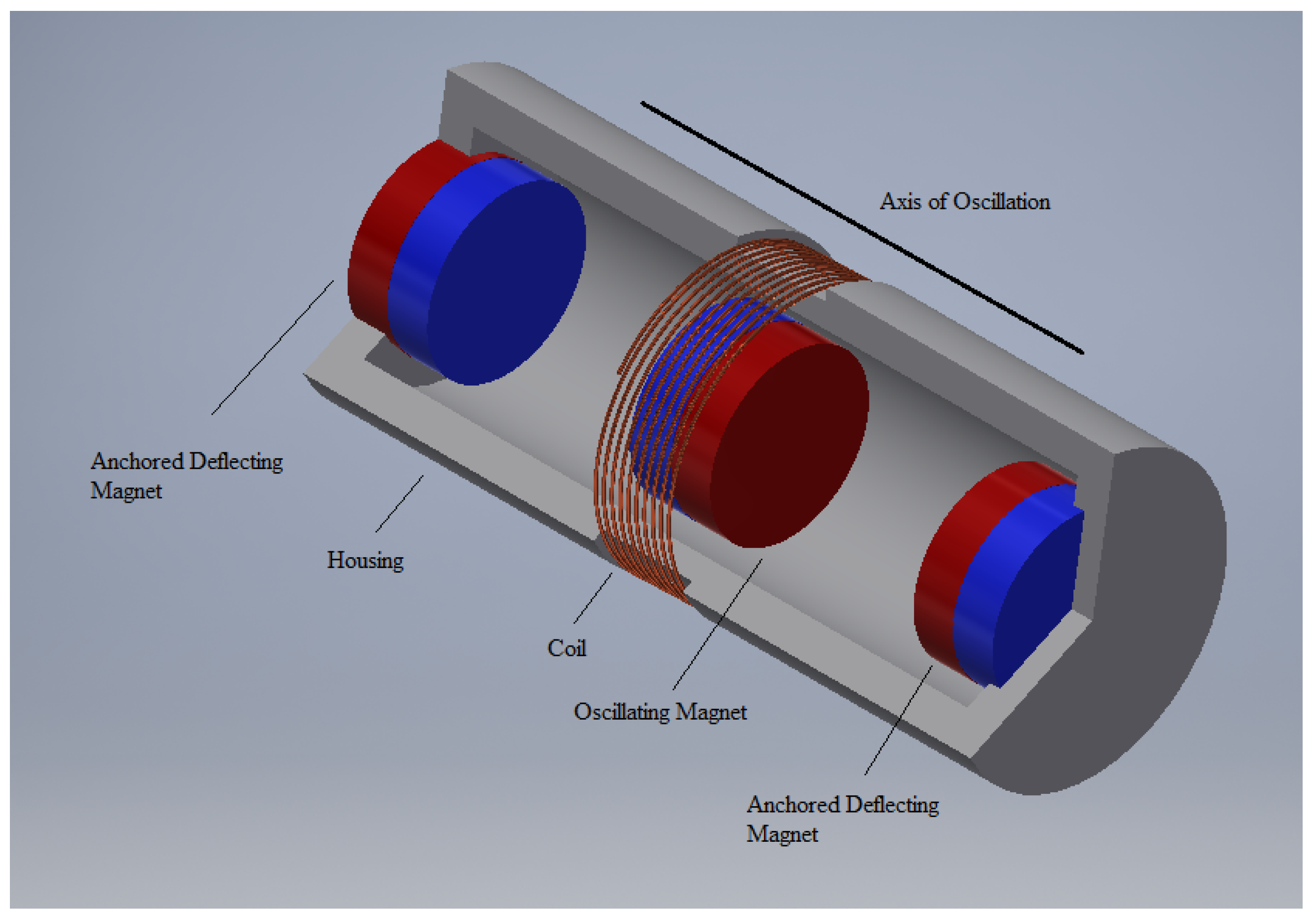
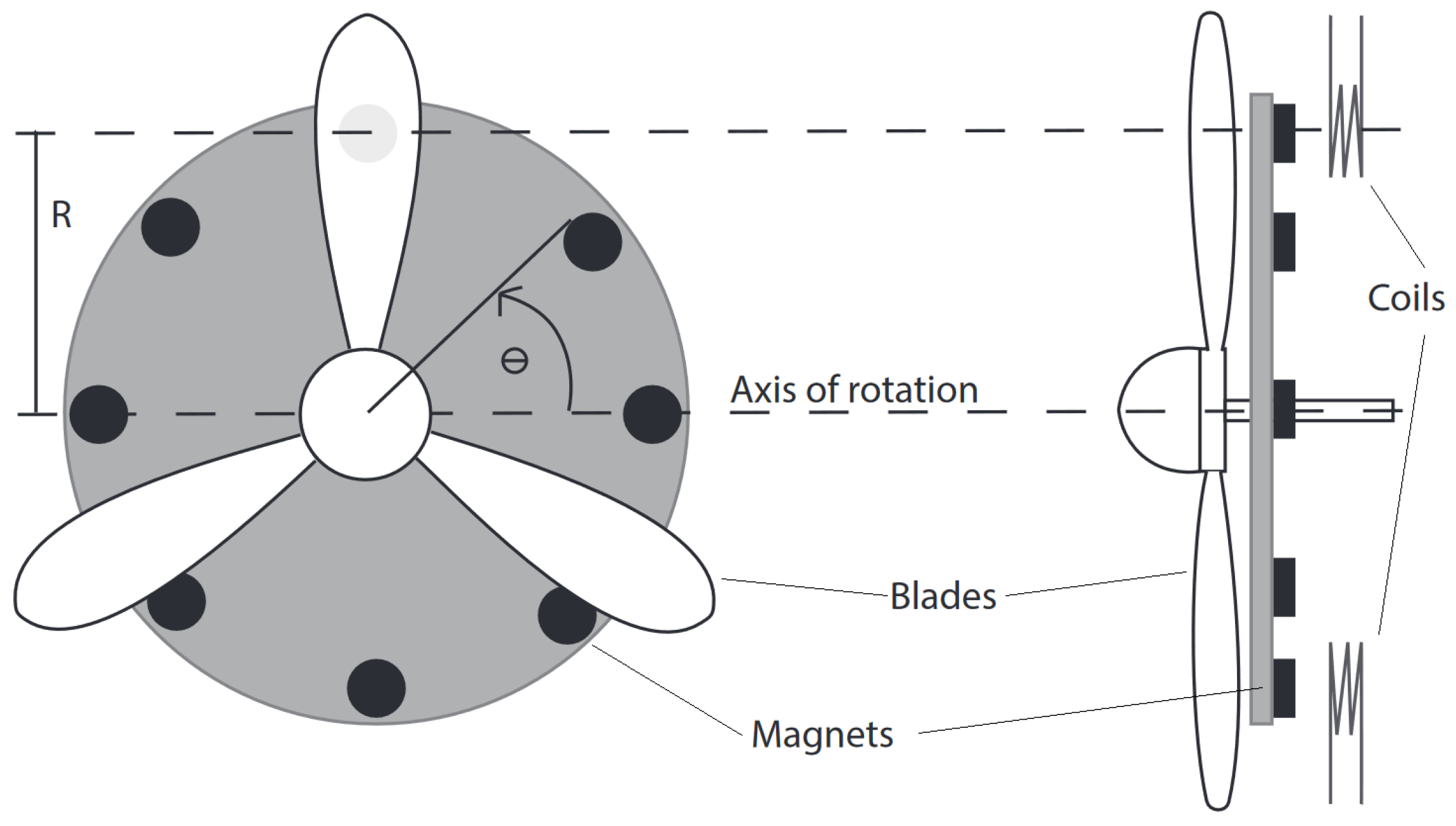






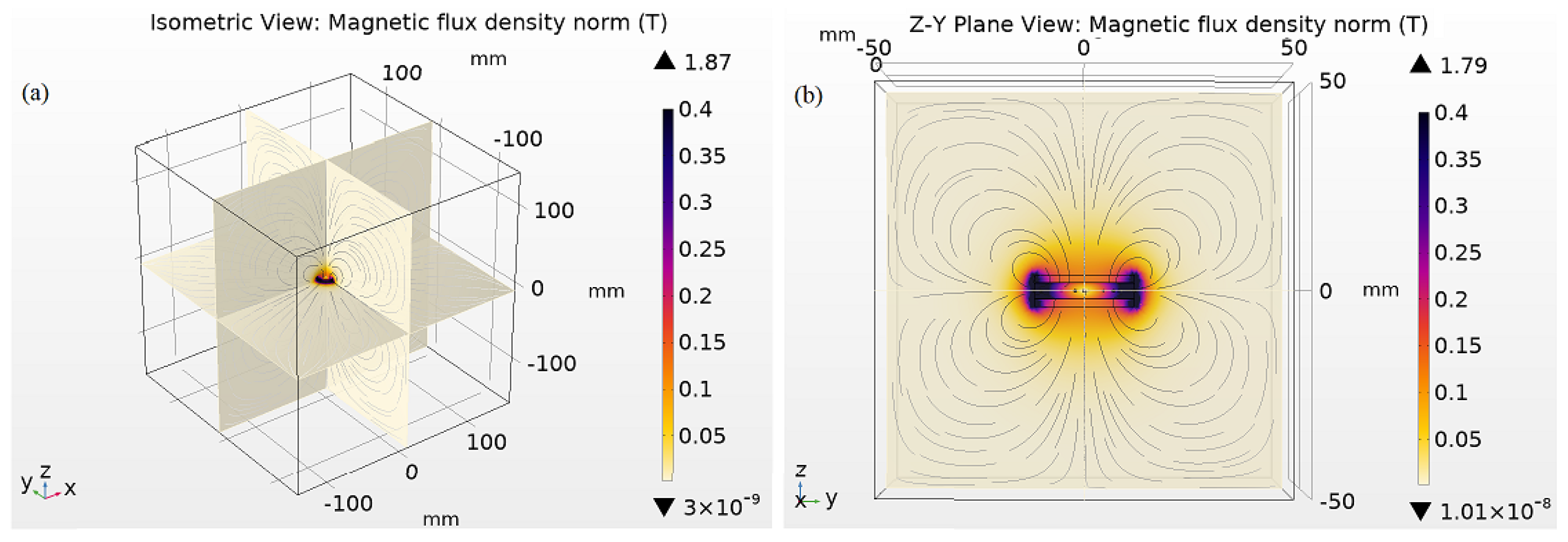
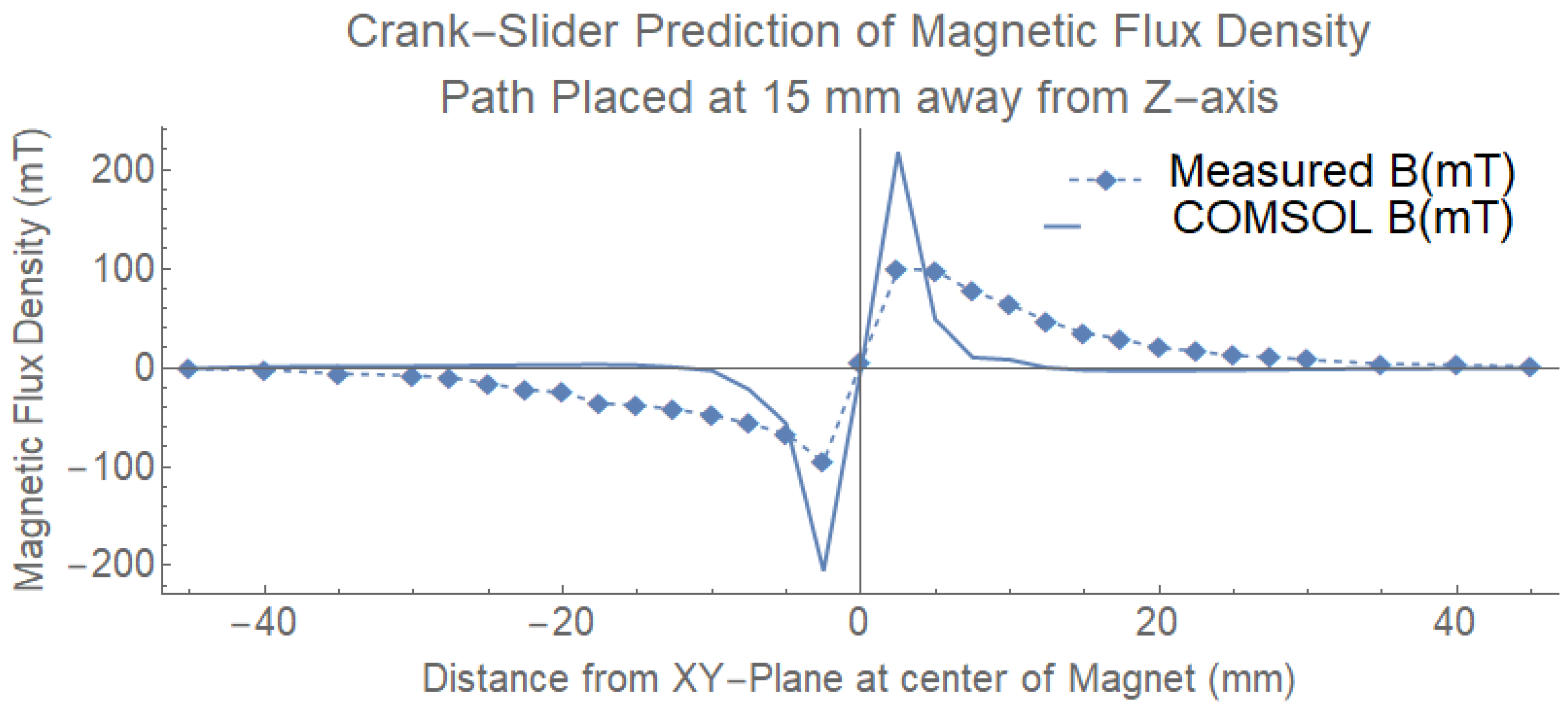
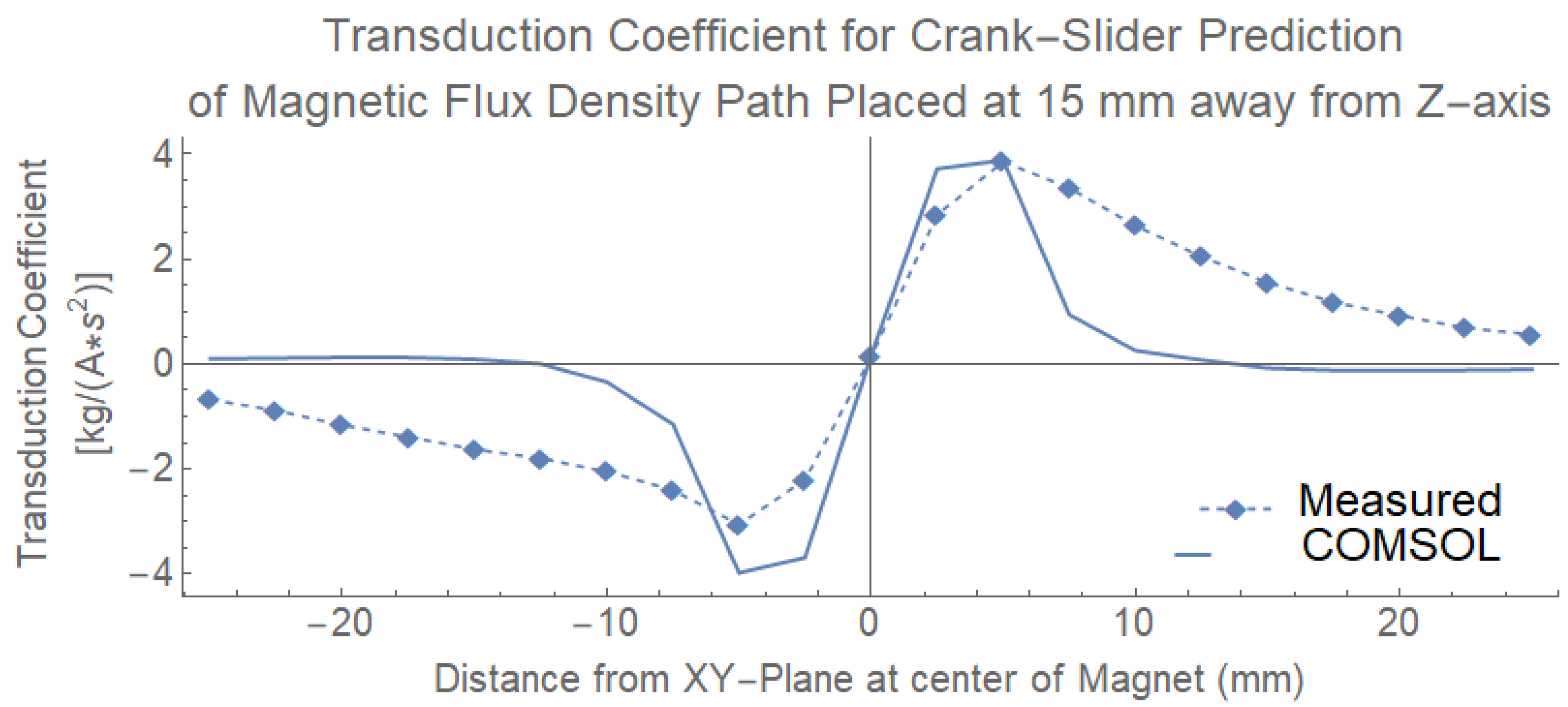


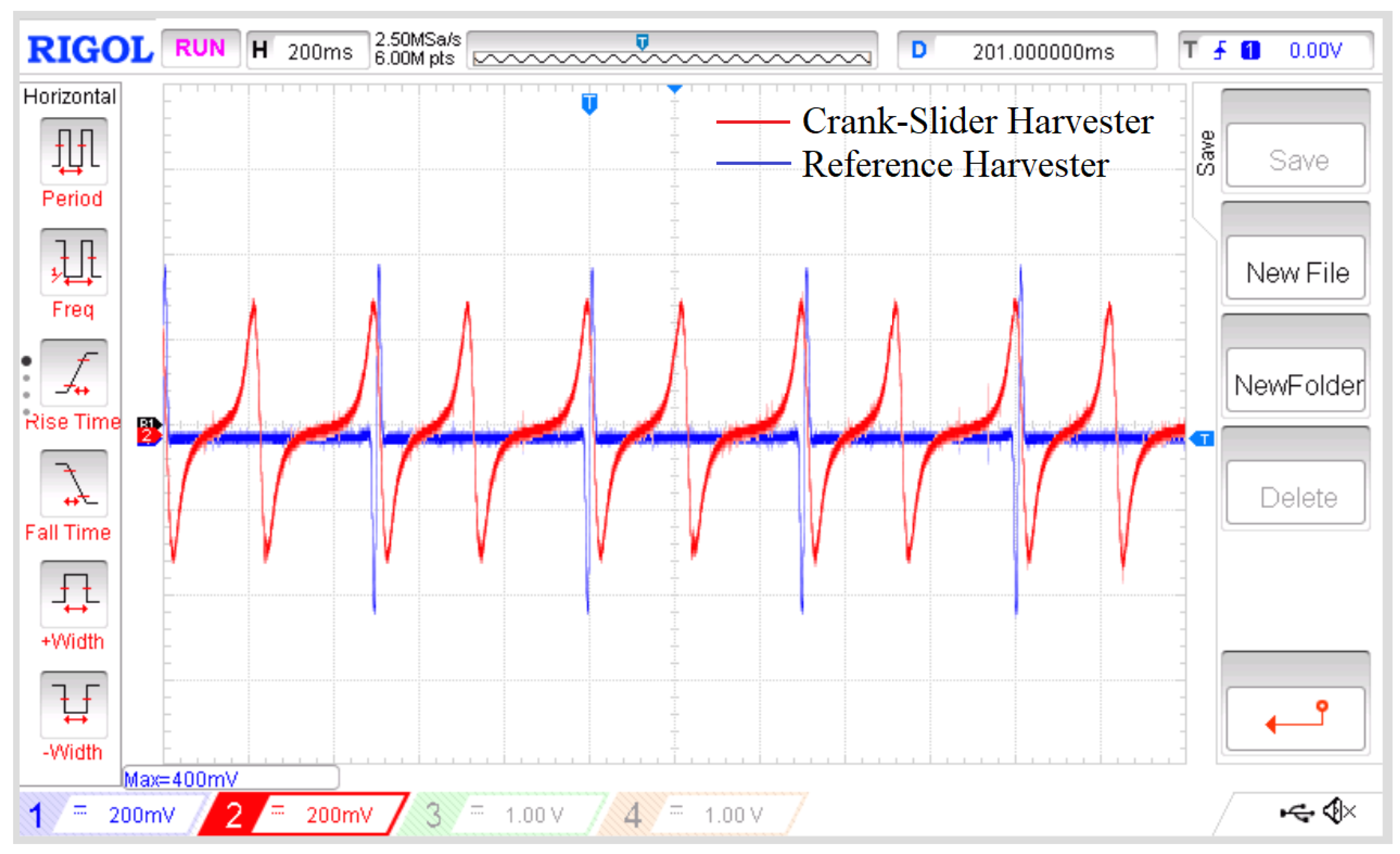
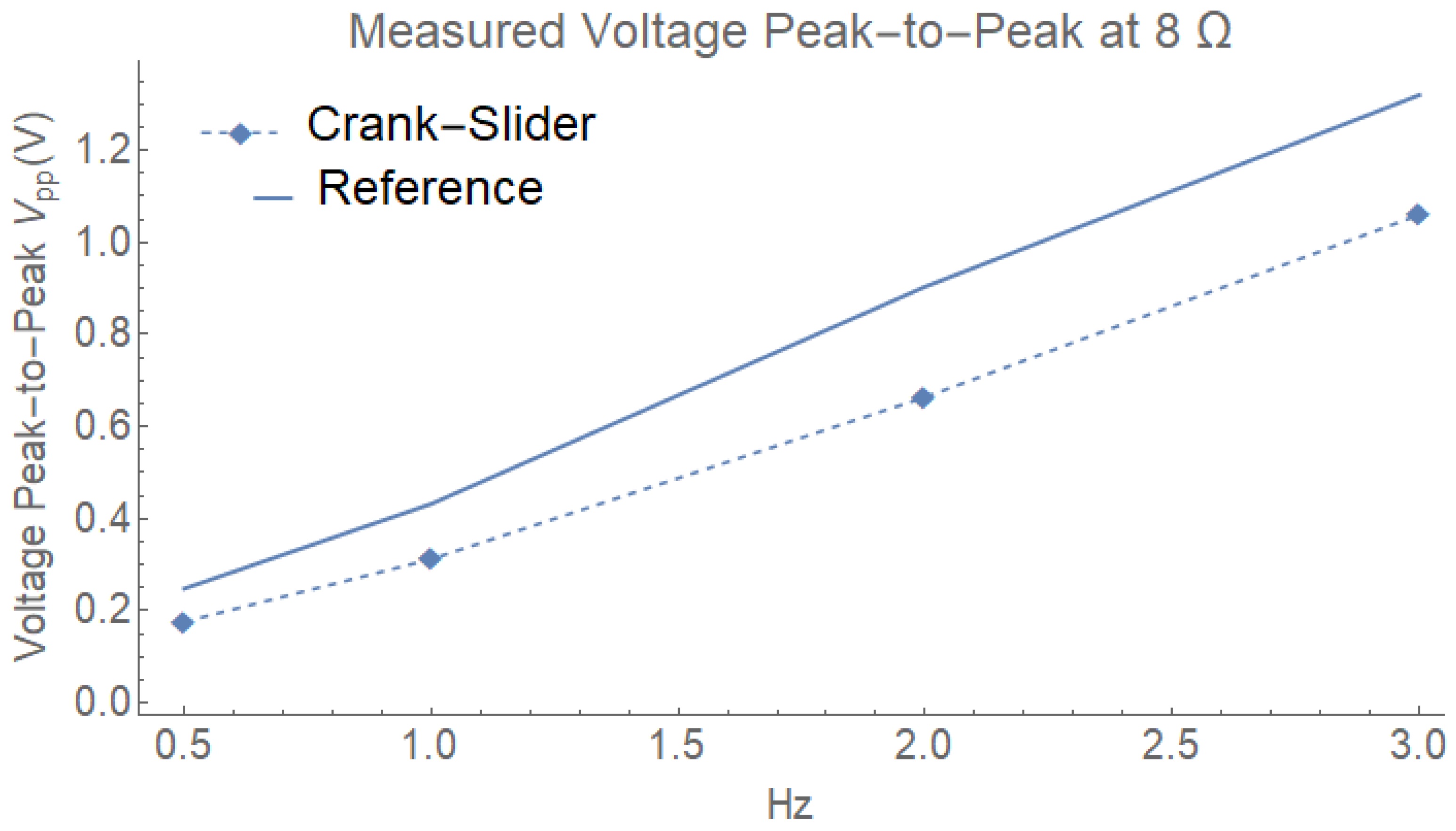
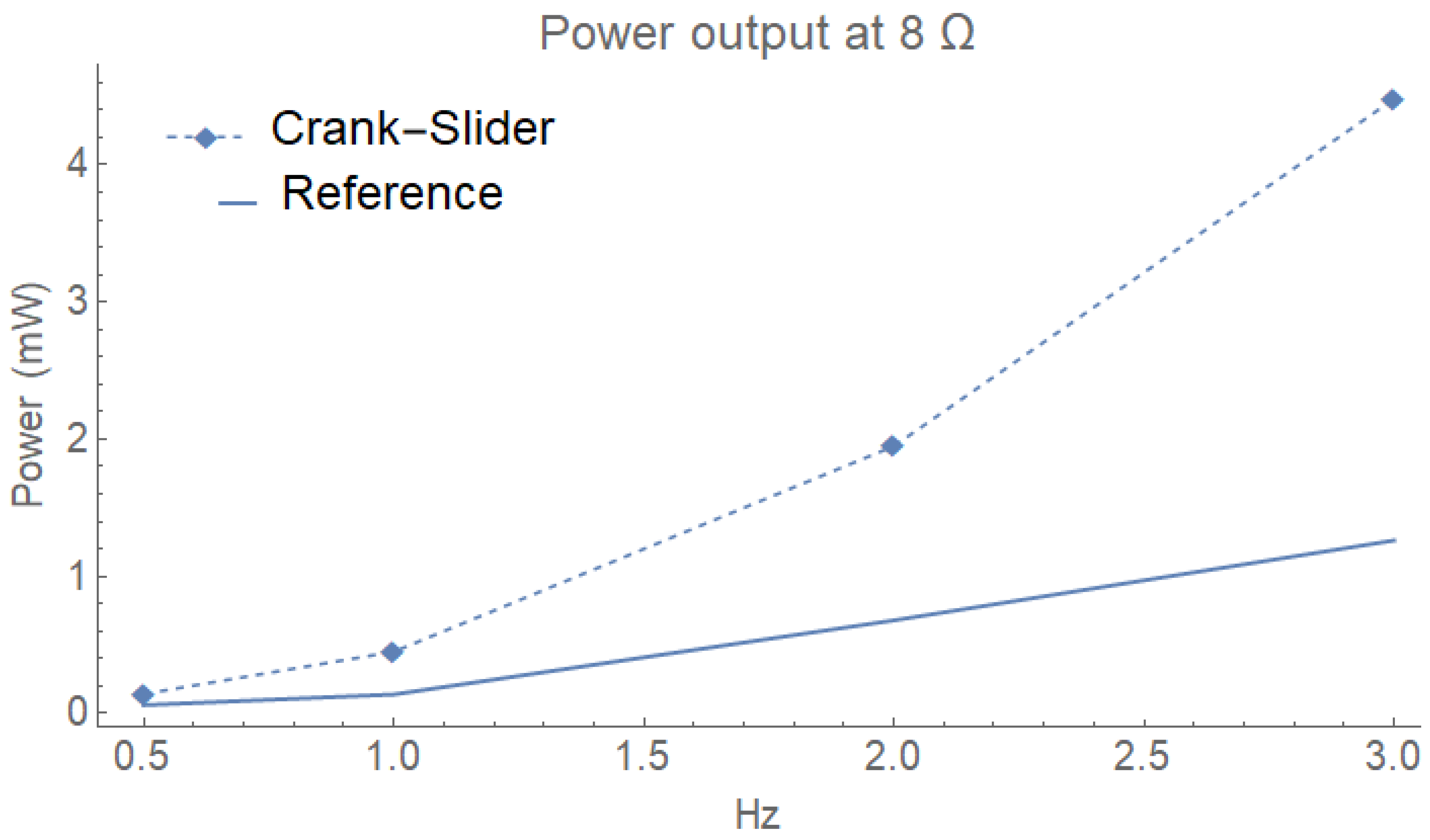

| Image | Wiring Diagram | Oscilloscope Output | (mV) | Power (mW) |
|---|---|---|---|---|
| (a) |  | 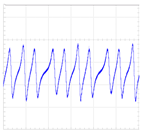 | 184 | 2.05 |
| (b) | 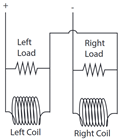 |  | 210 | 2.7 |
| (c) |  | 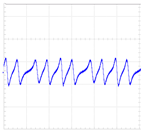 | 92.5 | 0.5 |
| (d) | 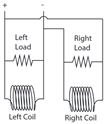 |  | 105 | 0.65 |
| (e) |  |  | 308 | 5.78 |
| (f) |  |  | 346 | 7.30 |
| Design | Reference Number | Winds Speed (m/s) | Harvester Frequency (Hz) | Power (mW) | Conversion Mechanism |
|---|---|---|---|---|---|
| V-Twin | (f) | 3.4 | 6.38 | 27.0 | Dynamo with rotation |
| V-Twin | (f) | 4.1 | 7.72 | 42.2 | Dynamo with rotation |
| small-scale Windmill | [6] | 4.47 | 4.5 | 5 | Piezoelectric with rotation |
| Highway Bridge Vibrations | [41] | N/A | 4.1 | 1.8 | Piezoelectric with vibration |
| Vehicle-Mounted Harvester (FPEH) | [42] | 18 | N/A | 14.5 | Piezoelectric with vibration |
| Vehicle-Mounted Harvester (EVEH) | [42] | 18 | N/A | 31.8 | Dynamo with vibration |
| Triboelectric-Hybrid (FB-EMG) | [43] | 6.96 | N/A | 4.23 | Rotor/stator with rotation |
| Outdoor IoT Harvester | [30] | 12 | 4.45 | 62 | Rotor/stator with rotation |
| Galloping Wind Harvester (SHPTWEH) | [44] | 14 | N/A | 0.238 | Piezoelectric—triboelectric with vibration |
| Canyon Bridge (WEHS) | [45] | 6.5 | 40.56 | 19.24 | Hybrid using both piezoelectric electromagnetic with rotation |
Publisher’s Note: MDPI stays neutral with regard to jurisdictional claims in published maps and institutional affiliations. |
© 2022 by the authors. Licensee MDPI, Basel, Switzerland. This article is an open access article distributed under the terms and conditions of the Creative Commons Attribution (CC BY) license (https://creativecommons.org/licenses/by/4.0/).
Share and Cite
Farzidayeri, J.; Bedekar, V. Design of a V-Twin with Crank-Slider Mechanism Wind Energy Harvester Using Faraday’s Law of Electromagnetic Induction for Powering Small Scale Electronic Devices. Energies 2022, 15, 6215. https://doi.org/10.3390/en15176215
Farzidayeri J, Bedekar V. Design of a V-Twin with Crank-Slider Mechanism Wind Energy Harvester Using Faraday’s Law of Electromagnetic Induction for Powering Small Scale Electronic Devices. Energies. 2022; 15(17):6215. https://doi.org/10.3390/en15176215
Chicago/Turabian StyleFarzidayeri, Jamshid, and Vishwas Bedekar. 2022. "Design of a V-Twin with Crank-Slider Mechanism Wind Energy Harvester Using Faraday’s Law of Electromagnetic Induction for Powering Small Scale Electronic Devices" Energies 15, no. 17: 6215. https://doi.org/10.3390/en15176215
APA StyleFarzidayeri, J., & Bedekar, V. (2022). Design of a V-Twin with Crank-Slider Mechanism Wind Energy Harvester Using Faraday’s Law of Electromagnetic Induction for Powering Small Scale Electronic Devices. Energies, 15(17), 6215. https://doi.org/10.3390/en15176215





